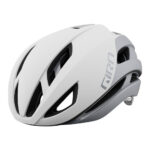Integrated Handle Bike Bar and stem combinations are generating buzz in the mountain biking world, particularly in high-performance contexts like professional racing. While assessing definitive performance metrics requires thorough testing, the design philosophy behind these integrated systems offers intriguing possibilities, especially for riders seeking optimized handling and responsiveness.
One compelling aspect of integrated handle bike bars lies in their potential to fine-tune handling characteristics. When manufacturers design the bar and stem as a unified system, they can precisely engineer the flex and stiffness profiles. This holistic approach allows for targeted performance enhancements that might be more challenging to achieve with traditional separate bar and stem setups. For instance, professional riders like Nino Schurter, who likely provides input into component design, can benefit from a system tailored to their specific riding style and preferences.
Considering the broader context of modern mountain bike configurations, the advantages of integrated handle bike bars become clearer. Many contemporary setups feature compliant elements such as wider tires (like 2.4 Aspens) on wide rims (30mm internal width). These components introduce a degree of inherent flex and compliance in the wheel and tire system. To counterbalance this compliance and maintain a direct and responsive feel, especially for demanding riders or racers, increasing stiffness in the handlebar and stem area becomes a logical strategy. This upstream stiffness can complement the downstream compliance, resulting in a balanced and controlled ride feel. It’s also worth noting that European riders often favor stiffer suspension setups, and brands like Rockshox are known for their supportive suspension feel. Combined with inherently stiff frame designs, an integrated, potentially stiffer, handle bike bar aligns with a performance-oriented approach that prioritizes directness and control.
Geometry is another key factor where integrated systems can offer subtle but significant advantages. It’s speculated that Nino Schurter’s integrated setup effectively mimics a very low-stack stem, possibly around a 100mm stem with a -17º angle. While such an aggressive stem angle might seem extreme for typical trail riding, potentially compromising handling for some, for elite racers like Schurter, the aerodynamic benefits and aggressive riding posture it facilitates are paramount. This illustrates how integrated designs can cater to highly specific geometry requirements for top-tier performance.
However, the adoption of integrated handle bike bars by the broader consumer market faces hurdles. Cost is a primary concern, as integrated carbon components are typically more expensive to manufacture than separate bars and stems. Furthermore, adjustability is inherently limited in a one-piece design. Fine-tuning bar roll, stem length, and stem angle, all easily achievable with traditional setups, becomes significantly restricted or impossible with integrated systems. This lack of adjustability might deter riders who prioritize customization and adaptability over ultimate stiffness or marginal aerodynamic gains.
In conclusion, integrated handle bike bars present a compelling engineering approach to optimize mountain bike handling, particularly for high-performance applications. Their potential to enhance stiffness and fine-tune geometry offers tangible benefits. However, factors such as cost and limited adjustability may confine their widespread adoption to dedicated racers and enthusiasts willing to prioritize performance over versatility and affordability.


